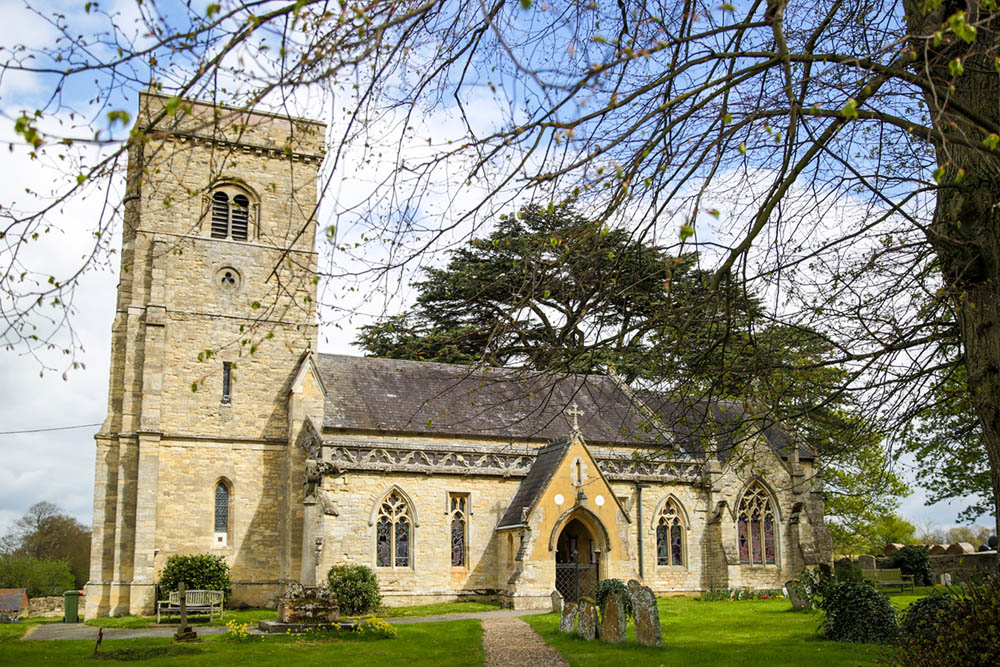
All Saints, Calverton
The parish is an ancient foundation, established in the seventh century by the missionary saint, Birinus, who became the first Bishop of Dorchester and established the parochial system across the area. Calverton was one of the first Tractarian parishes in this part of Buckinghamshire, the old vicarage being where many of the Tracts for the Times were planned and to which the Rev’d Henry Edward (later Cardinal) Manning was a visitor. It is known that both Newman and Pusey preached from the pulpit of the present church, and that Pusey certainly celebrated at its altar.
All Saints comprises a western neo-Norman tower, a nave of three bays, a chancel (to the north side of which is attached a vestry), and a south aisle (to which is attached a gabled porch, the principal entrance to the church). At the east end of the south aisle is a baptistery. The present church, which is approximately 30 metres in length, with the chancel being approximately four metres wide, was built in stone between 1818 and 1824 by William Pilkington, an architect of national repute, on the foundations of a previous church that was in a poor condition and demolished to make way for the new building.
The church was decorated internally and added to externally in the 1850s at the expense of the then Rector, the Hon. and Rev’d Charles Gore Perceval. This work included the installation of window tracery and stained glass depicting the saints (much of it attributed to O’Connor), the addition of openwork parapets and the carving of angels, birds and foliage in the roof.
In 1871–72, further decoration was added by the local architect, Edward Swinfen Harris. This included the laying of Minton tiles on the chancel floor, the application of sgraffito patterns to the chancel walls and the installation of a mosaic reredos of the Epiphany, which is unusual in depicting Christ as a small boy. Figures were also painted on the stone pulpit by the artist Daniel Bell at about this time.
A stone cross approximately four metres high and with the signs of the Evangelists at the four corners of its base has sat in the well-maintained graveyard at the south-west corner of the church since circa 1873.
Thanks to a very recent generous legacy, All Saints was, after a period of some 1300 years, able to have water installed in the Church in 2005 providing kitchen and toilet facilities.
The most recent Quinquennial Inspection Report (QIR) was made in 2007, requiring very little immediate work. A crack in the north wall of the vestry is under the active attention of the architect, who has advised against the need for an immediate repair. The recommendations of the QIR are well in hand and the building is in an overall good state of repair. The tracery, mullions and stained glass of the north nave windows and baptistery rose window were fully restored in the summer of 2003, as were those of the majority of the other windows over the previous few years.